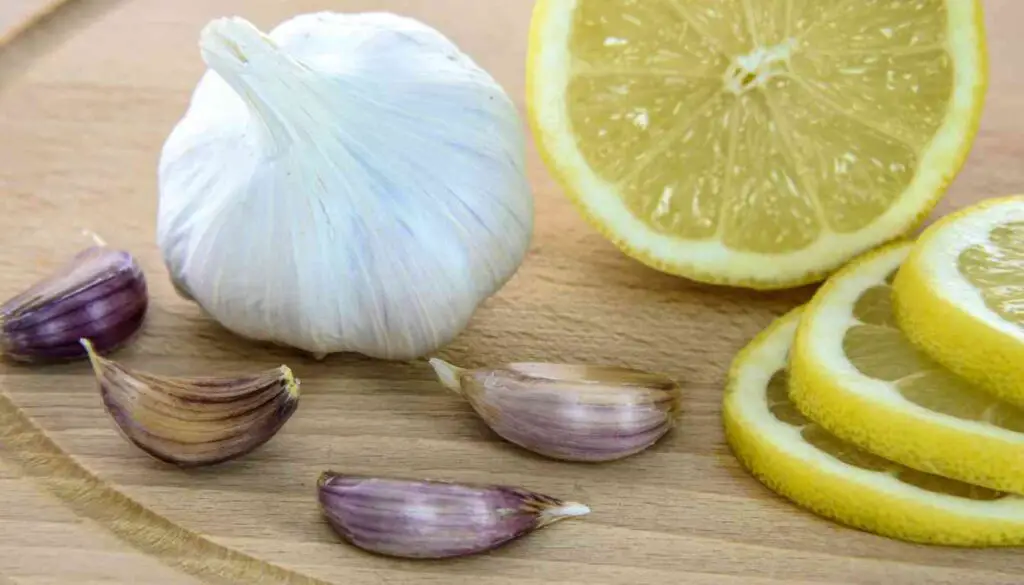Antibiotics are a category of medications that combat bacterial infections by either eliminating the bacteria or inhibiting their proliferation. They are frequently prescribed by physicians to address a variety of infections, such as strep throat, urinary tract infections, and pneumonia. While antibiotics are successful in managing bacterial infections, their overuse and misuse can result in antibiotic resistance, an escalating public health issue. But do antibiotics and garlic complement each other?
Garlic, on the other hand, has been used for centuries as a natural remedy for various ailments, including infections. Garlic contains a compound called allicin, which has been shown to have antibacterial properties. Some studies suggest that garlic may be effective in treating bacterial infections, such as those caused by E. coli and Staphylococcus aureus. However, more research is needed to determine the effectiveness of garlic as an antibiotic and to understand how it works.
Antibiotic Properties of Garlic – Antibiotics and Garlic
Garlic is a well-known herb that has been used for centuries for its various health benefits. One of the most notable benefits of garlic is its antimicrobial properties. Garlic contains several active components, including allicin, ajoene, and allyl sulfides, which are responsible for its antibacterial, antiviral, and antifungal properties.
Active Components of Garlic – Antibiotics and Garlic
Allicin is the primary active component of garlic and is responsible for its characteristic odor and flavor. It is also a potent antioxidant and has been shown to have antimicrobial properties. Ajoene, another active component of garlic, has been found to be effective against a wide range of bacteria, including Staphylococcus aureus, Pseudomonas aeruginosa, Candida albicans, Streptococcus mutans, Enterococcus faecalis, and Klebsiella pneumoniae. Allyl sulfides are also present in garlic and have been shown to have antibacterial and antifungal properties.
Effectiveness Against Bacteria, Fungi, and Viruses – Antibiotics and Garlic
Studies have shown that garlic is effective against a wide range of bacteria, viruses, and fungi. In fact, a study published in the Journal of Antimicrobial Chemotherapy found that a compound in garlic named diallyl disulfide is 100 times more powerful than two common types of antibiotics for fighting the bacteria Campylobacter. The garlic compound was able to destroy the bacteria in just a fraction of the time taken by the antibiotics.
Garlic has also been found to be effective against methicillin-resistant Staphylococcus aureus (MRSA), a type of bacteria that is resistant to many antibiotics. A study published in the Journal of Medicinal Food found that fresh garlic extract enhances the antimicrobial activities of antibiotics against antibiotic-resistant pathogens, including MRSA.
In addition to its antibacterial properties, garlic has also been found to be effective against fungal infections. Fresh garlic extract has been shown to inhibit the growth of Candida albicans, a common fungal infection that can cause thrush and other infections.
Overall, garlic is a powerful herb that has many health benefits, including its antimicrobial properties. While more research is needed to fully understand the extent of its benefits, garlic is a safe and natural way to help fight against bacterial, viral, and fungal infections.
Studies on the Antibacterial Properties of Garlic – Antibiotics and Garlic

Garlic is a well-known natural antimicrobial agent that has been used for centuries to treat various infections. Several studies have been conducted to evaluate the antibacterial effect of garlic and its active components. In this section, I will discuss some of the most significant findings related to garlic’s antibacterial properties.
Allicin: The Main Active Component
Allicin is the main active component in garlic that is responsible for its antibacterial activity. It is a sulfur-containing compound that is produced when raw garlic is crushed or chopped. Allicin has been shown to be bactericidal against a wide range of bacteria, including antibiotic-resistant strains. It works by disrupting the bacterial cell membrane, leading to cell death.
Several studies have investigated the antibacterial activity of allicin. For example, one study found that allicin had a significant inhibitory effect on the growth of Staphylococcus aureus, Escherichia coli, and Pseudomonas aeruginosa. Another study showed that allicin was effective against Helicobacter pylori, a bacterium that can cause stomach ulcers and gastric cancer.
Extraction Process and Results
To extract allicin from garlic, various methods have been used, including crushing, chopping, and pressing. One study compared the antibacterial activity of fresh garlic, raw garlic, and garlic concentrate. The results showed that fresh garlic extract displayed evident inhibition properties against Candida albicans and methicillin-resistant Staphylococcus aureus (MRSA), yet weak inhibition properties against Pseudomonas aeruginosa. Additionally, fresh garlic extract showed the potential to improve the effect of antibiotics on antibiotic-resistant pathogens.
Another study evaluated the antibacterial effect of garlic extracts on both Gram-negative and Gram-positive bacteria. The results showed that garlic extracts have a high range of antibacterial effect against both E. coli and Klebsiella pneumoniae, as well as Staphylococcus aureus. The present study observations revealed that garlic makes large clear zones in comparison to the currently available antibiotics used in the study.
Garlic has demonstrated significant antibacterial activity against a wide range of bacteria. Allicin, the main active component in garlic, is responsible for this activity. The extraction process and concentrations used can affect the sensitivity of the bacteria to garlic. Further research is needed to fully understand the antimicrobial susceptibility testing of garlic and its potential as a biofilm disruptor.
Other Effective Natural Antibiotics

When it comes to natural antibiotics, garlic is not the only option. There are several other natural remedies that have been shown to have antibacterial and antimicrobial properties. Here are a few worth considering:
Honey
Honey has been used for centuries as a natural remedy for a variety of ailments. It is known for its antibacterial and antimicrobial properties, which can help fight off infections. Manuka honey, in particular, has been shown to have potent antibacterial properties, thanks to its high concentration of hydrogen peroxide and methylglyoxal. In addition to its antibacterial and antimicrobial properties, honey is also a great source of antioxidants and can help boost the immune system.
Myrrh Extract
Myrrh extract is derived from the resin of the myrrh tree and has been used for medicinal purposes for thousands of years. It has been shown to have antibacterial and antimicrobial properties, making it an effective natural remedy for infections. Myrrh extract is also a potent antioxidant and can help reduce inflammation.
Essential Oils of Thyme and Oregano
Thyme and oregano are both herbs that are commonly used in cooking, but they also have medicinal properties. The essential oils of thyme and oregano contain a compound called carvacrol, which has been shown to have antibacterial, antimicrobial, and antioxidant properties. These essential oils can be used topically or ingested to help fight off infections.
Overall, while garlic is a powerful natural antibiotic, there are several other options worth considering. Honey, myrrh extract, and essential oils of thyme and oregano are all effective natural remedies that can help fight off infections and boost the immune system.
Before You Go – Antibiotics and Garlic

Garlic as a Natural Antibiotic
Garlic has been used for centuries as a natural antibiotic due to its potent antibacterial and antimicrobial properties. The active ingredient in garlic, allicin, has been shown to be effective against a wide range of bacteria, including multidrug-resistant bacteria. However, it is important to note that garlic cannot replace conventional antibiotics in treating serious infections.
Benefits and Limitations
Garlic has many health benefits beyond its antibiotic properties. It has been shown to lower blood pressure, reduce cholesterol levels, and boost the immune system. However, garlic can also cause side effects such as bad breath, body odor, and upset stomach. In addition, some people may be allergic to garlic and should avoid consuming it.
Importance of Consulting a Healthcare Professional
While garlic can be a useful addition to a healthy diet, it is important to consult a healthcare professional before using it as an alternative or traditional medicine. Garlic can interact with certain medications, such as blood thinners, and may not be appropriate for everyone.
Garlic can be a valuable tool in promoting overall health and fighting bacterial infections. However, it is important to use garlic responsibly and in consultation with a healthcare professional to avoid potential side effects and ensure proper treatment of infections.
References – Antibiotics and Garlic
Little Herb Encyclopedia, by Jack Ritchason; N.D., Woodland Publishing Incorporated, 1995
The Ultimate Healing System, Course Manual, Copyright 1985, Don Lepore
Planetary Herbology, Michael Tierra, C.A., N.D., Lotus Press, 1988
Handbook of Medicinal Herbs, by James A. Duke, Pub. CRP Second Edition 2007
The Complete Medicinal Herbal, by Penelope Ody, Published by Dorling Kindersley
Check the Following Articles!
Herbal Remedies for Hypertension
Herbalist Career: How to Become a Successful Herbal Pro
Antibiotics and Garlic
Antibiotics and garlic are like two sides of the same coin. They both have powerful antimicrobial properties, but they work in different ways.
That’s where theherbprof.com comes in. It’s like your personal guide to the world of herbs and their interactions with conventional medicine.
Garlic is a natural antibiotic. It contains allicin, a compound that is known to fight bacteria. It’s like a superhero, battling the bad guys in your body!
However, it’s important to note that while garlic can complement antibiotics, it should not replace them. Antibiotics are powerful drugs that are necessary for treating certain infections. It’s like having a team of superheroes, each with their own special powers!
And the best part? Learning about the interaction between antibiotics and garlic is a great way to support theherbprof.com.
Frequently Asked Questions – Antibiotics and Garlic

How to use garlic as an antibiotic?
To use garlic as an antibiotic, you should consume it raw, crushed, or chopped. This is because allicin, the active compound in garlic that has antibiotic properties, is only released when garlic is cut or crushed. You can mix crushed garlic with honey or olive oil to make it more palatable. Additionally, you can add it to your food as a seasoning or take garlic supplements, but keep in mind that supplements may not have the same potency as raw garlic.
How long does it take for garlic to kill bacteria?
The time it takes for garlic to kill bacteria varies depending on the type of bacteria and the amount of garlic consumed. Some studies suggest that garlic can start to kill bacteria within 30 minutes of consumption. However, it is important to note that garlic is not a substitute for prescription antibiotics and should not be used to treat serious bacterial infections.
What is the dosage of garlic as an antibiotic?
There is no standard dosage for using garlic as an antibiotic. However, most studies have used a dose of 2 to 4 grams of fresh garlic per day, which is equivalent to about one to two cloves of garlic. It is important to note that consuming too much garlic can cause stomach upset, bad breath, and other side effects.
Can garlic draw out infection?
Garlic has antimicrobial properties that can help fight infections. However, there is no evidence to suggest that garlic can “draw out” an infection. If you have an infection, it is important to seek medical attention and follow your doctor’s prescribed treatment plan.
What medications does garlic interact with?
Garlic can interact with certain medications, including blood thinners, such as warfarin, and some HIV medications. If you are taking medication, it is important to talk to your doctor before consuming garlic or garlic supplements.
Is garlic stronger than antibiotics?
Garlic has antimicrobial properties and can be effective against some types of bacteria. However, it is important to note that garlic is not a substitute for prescription antibiotics and should not be used to treat serious bacterial infections. Additionally, some bacteria have become resistant to garlic over time, making antibiotics a more reliable treatment option in some cases.

